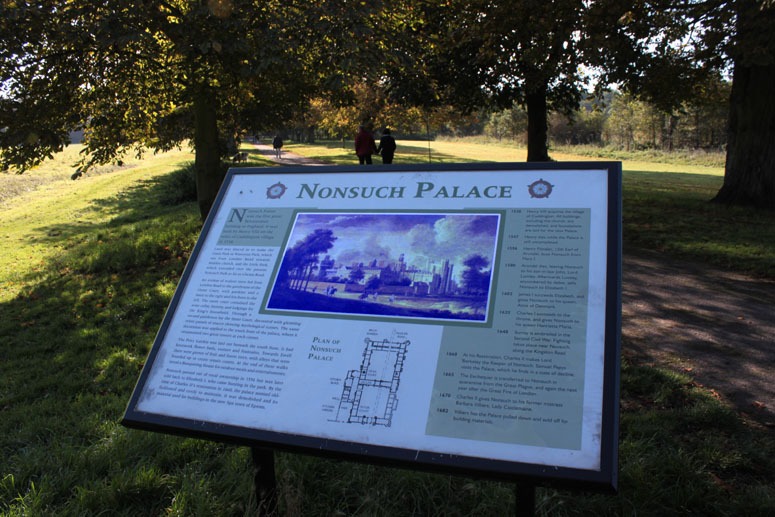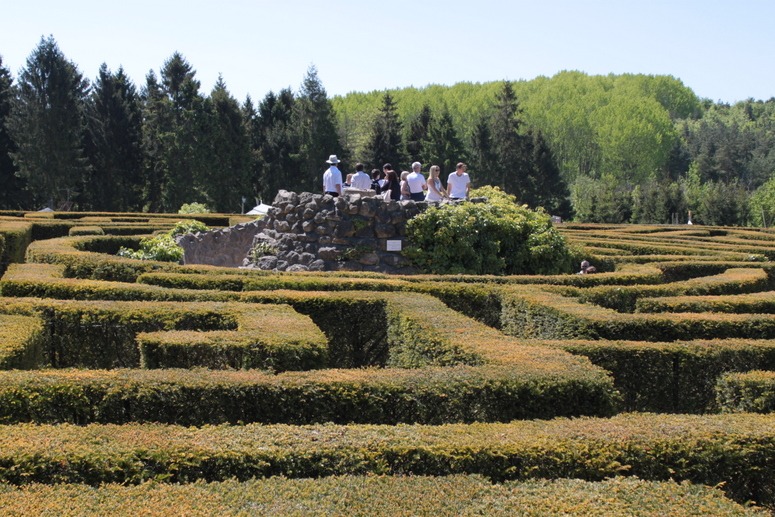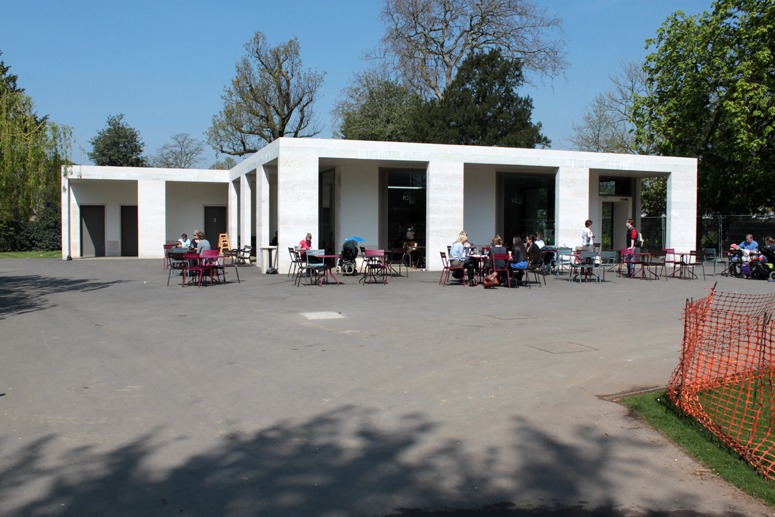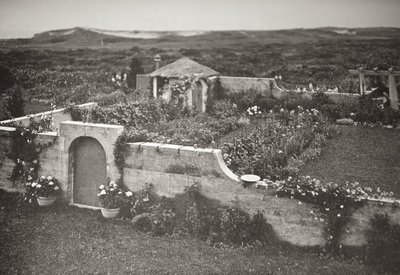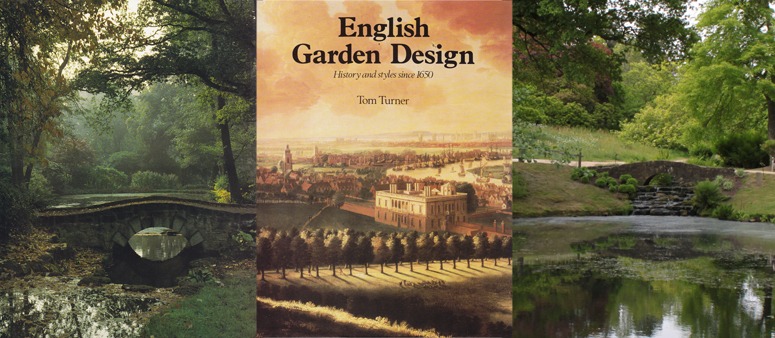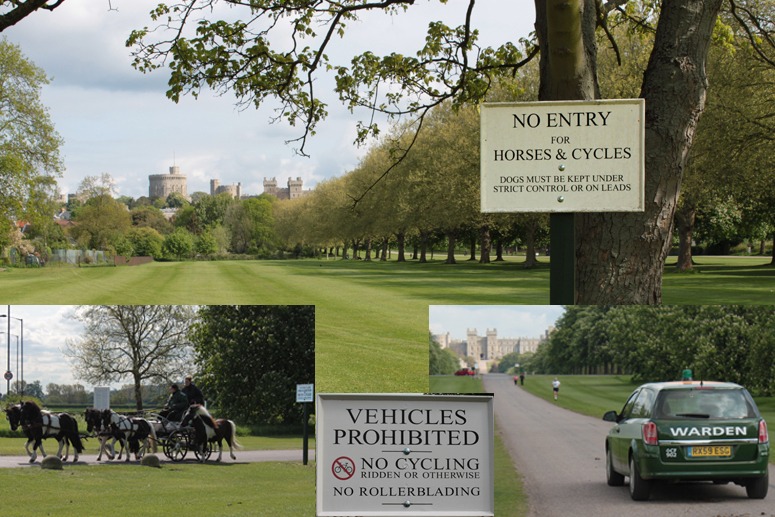The autumn weather was beautiful and I went to see the Nonsuch garden today. Little survives and I agree with the local Nonsuch historians that it represents ‘both a responsibility and a challenge.. [regarding] the proper management, preservation, and presentation of the site of one of the great houses and gardens of England’. A simple first step would be to attempt a re-creation of one of the Knot gardens shown on John Speed’s plan of Nonsuch. The plan was drawn in 1610 and a re-created knot would make a great contribution to garden history, for a small outlay. Since various interpretations of Speed’s drawing are possible, a different knot could be produced each year and they could become famous.
Category Archives: Historic garden restoration
Does Leeds Castle have the lovliest castle garden in England?
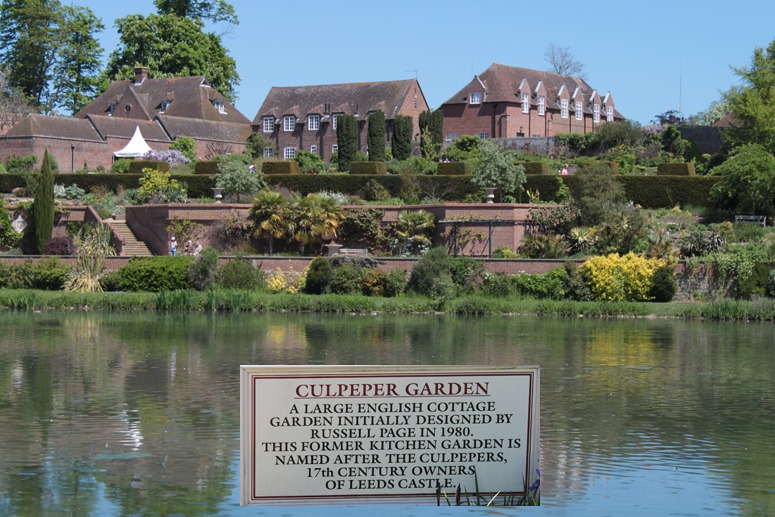 No. It does not.
No. It does not.
Leeds Castle gets enormous and well-deserved publicity as ‘the lovliest castle in England’ and is crowded with visitors paying £17.50 each in 2010. My guide book says the garden is Grade II listed. If correct, this is ridiculous. The designed landscape around the castle should be Grade I+++ listed. The riverside garden and the Culpepper Garden (supposedly designed by Russell Page) are mediocre. But why? With such a host of visitors the Leeds Castle Foundation must have a sufficiency of funds. I would not criticise the design if it were a public park in run-down town in a depressed part of the English Midlands. But for the surroundings of the very finest example of a designed medieval landscape in England – I recommend the appointment of a skilled designer-manager.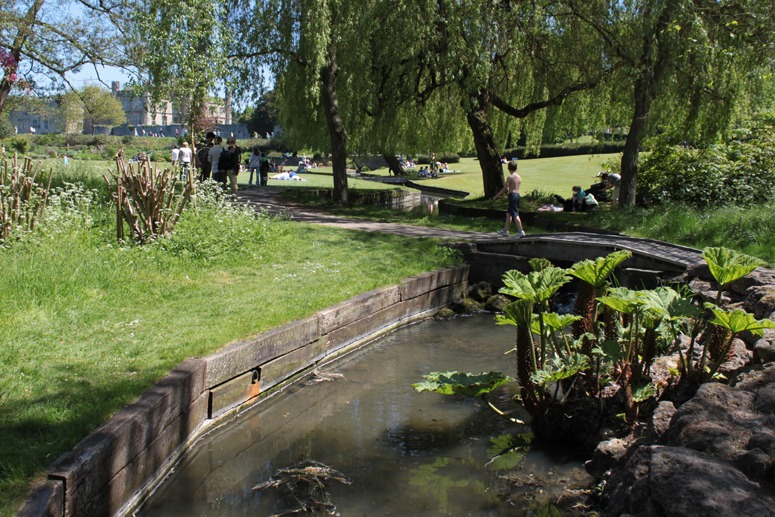 England has few better places in which to dream of gallant kings, beautiful maidens and the age of chivalry. At the time of their marriage, in 1524, Edward was 15. Eleanor was 10 years old, Spanish and beautiful. It was an exceedingly happy marriage, arranged by their parents. They had 16 children. Edward was a great military leader and in 1271 he and Eleanor were in Acre, crusading. Her child miscarried and they returned home via Rome, where they met the Pope, and via Paris. We would frown on the early marriage and the anti-Muslim crusade. One can rarely judge an earlier age by the standards of a later age – but we need have no reservations in criticising the current design of Leeds Castle Gardens. It’s pathetic. And why did they litter the streambank with old railway sleepers?
England has few better places in which to dream of gallant kings, beautiful maidens and the age of chivalry. At the time of their marriage, in 1524, Edward was 15. Eleanor was 10 years old, Spanish and beautiful. It was an exceedingly happy marriage, arranged by their parents. They had 16 children. Edward was a great military leader and in 1271 he and Eleanor were in Acre, crusading. Her child miscarried and they returned home via Rome, where they met the Pope, and via Paris. We would frown on the early marriage and the anti-Muslim crusade. One can rarely judge an earlier age by the standards of a later age – but we need have no reservations in criticising the current design of Leeds Castle Gardens. It’s pathetic. And why did they litter the streambank with old railway sleepers?
The maze at Leeds Castle is of a different quality: it is well conceived, well made, well positioned and popular. Unicursal (one-path) labyrinths were popular religious symbols in the middle ages and symbolized the spiritual path a pilgrim might take. Multicursal (many-path) mazes were popular renaissance games. They were fun to experience and symbolic of the difficulties of finding and winning the game of love: a fair maid might be placed at the centre of a maze. The Leeds Castle Maze is enjoyed in precisely this way and does not conflict with the medieval castle landscape.
Romantic new cafe garden and elegant architecture in London’s Chiswick Park?
I have always had a soft spot for Chiswick House and Park: my Mum used to play there; it is a key project in William Kent’s design progress; it is the only park or garden in the world where a uniformed official has told me that ‘you can ride your bicycle here if you want to’. So it was a pleasure to find that the current refurbishment of the park by English Heritage and the Chiswick House and Gardens Trust includes what may have been intended as a romantic new ‘Garden of the Mind’. The gravel was dredged from the North Sea. The bitumen binder was sourced far beneath the region in which the world’s first gardener worked. The garden furniture comes from far-away China. The manhole covers are tastefully handled. The architecture reminds me of Mies’ Barcelona Pavilion. We must congratulate the dashing young boss of English Heritage (Simon Thurley) and wonder if his own fair hand was behind this garden. Conveniently, it has good toilets and is within spitting distance for visitors to Lord Burlington’s Chiswick Villa. But, for me, the Garden of the Mind is nothing but a sea of bitmac (though a layer of gravel has been applied since the photo was taken). Chiswick Park is a key project in the architecture and landscape architecture of the eighteenth century world. Its sparkling new cafe deserves a sparkling new cafe garden – and Mies showed the way at Barcelona. English Heritage once ran a highly unsuccessful Contemporary Heritage Gardens project, because it was applied on inappropriate sites. The cafe in Chiswick Park could still be a great site for a great project. [See note on heritage garden weddings]
Garden as setting for life's drama
Anna Gilman Hill’s ‘Grey Garden’ in the East Hamptons is the setting for a movie on the lives of mother and daughter Little and Big Eddie. Anna Hill has been described as “one of the world’s greatest feminine horticulturalists.”
Yet the women who acquired her garden were challenged by the legacy she left them.
The Grey Garden, and the women’s struggle to maintain a viable garden in a beachside setting, somehow parallel their lives as individuals.
http://www.whatweretheskieslike.com/2009/03/grey-gardens-from-garden-perspective.html
Is there too much of Kew Gardens at Wakehurst Place?
‘Father, forgive them, for they know exactly what they do’. (adapted from Luke 23:34). I have always liked Wakehurst Place and have put it on the dustjacket of a book – but I criticised Wakehurst Place last year and after another recent visit am being driven to conclude that it is being over-Kewed.
A plaque near the house is dedicated to ‘Sir Henry Price Bt. who in 1963 presented these lovely gardens for the education and enjoyment of all who visit them’. Two questions must be asked ‘Education in what?’ and ‘Enjoyment of what?’ The apparent aim is to convert a beautiful place into a spotty collection of specimens.
When Wakehurst Place first appeared on Gardenvisit.com, about 10 years ago, we received an anquished email along the lines ”Call us pigs or Pakis if you must but please PLEASE do not call us Gardenesque’. But why shouldn’t Wakehurst Place be a place for ‘education’ and ‘enjoyment’ related to the Gardenesque Style? Properly understood and executed, it is one of the most-English and most-appreciated styles of garden design. My recommendations for Wakehurst Place are:
– an Arts and Crafts area around the house
– a Gardenesque section at the head of the valley
– a full-scale Landscape transition to a Sublime lake at the foot of the valley
But as Geoffrey Jellicoe argued, Creative Conservation is often the best policy for historic gardens and landscapes. Should this be wanted, the garden managers could also consider
– seasonal and thematic ribbons interlacing the estate
But an even more important step would be to appoint a Design Manager for Wakehurst Place. If the manager’s skills are only horticultural then the future of gardens is to become more botanical, less Beautiful, less Picturesque, less Gardenesque and less Sublime. Let’s hope I’m wrong.
Note1: the above photographs of the bridge at the head of the valley are looking in opposite directions
Note2: by ‘over-Kewed’ I mean ‘too much of an emphasis on botany’ – Kew Gardens are in fact getting better looking year-by-year.
The strange re-birth of liberal England has not reached Windsor Great Park, yet
I re-visited Windsor Great Park on the day, in May 2010, that Britain got a Liberal-Tory government and tried to ride my bike along the 4.26 km Long Walk. A flunky dashed out and told me to stop it. I offered to push the bicycle. He said this was forbidden. ‘Why?’ I asked. ‘The Queen doesn’t like cyclists’, he told me. ‘I think I’ll become a republican’, I told him. ‘Me too’ he said. In the course of a long stroll up the Long Walk I noticed the above signs and was overtaken by many vehicles, including picturesque horse-drawn carriages, for paying guests, and a fleet of warden’s cars with no apparant purpose other than ridding the realm of pestilential cyclists. Those with money and power lord it over the poor plebs who pound their own pedals. ‘Twas ever thus’ you might think.
But there is hope for the future: our current Prime Minister (David Cameron) and the current the Mayor of London (Boris Johnson) are both cycle commuters – and it is hard to see Prince Charles as anything other than a postmodern liberal tory. Nick Clegg could buy a bike too. It’s a pity about the Queen but she does belong to another era and Windsor Castle remains the best symbol of what the best historian of French Gardens (Kenneth Woodbridge) saw as the Norman strand in British life. The Normans conquered England in 1066 and despite their origin in a tribal and pagan region (Scandinavia), what they brought to England was the centralist administration and palace civilization of West Asia (as modified by the Macedonians, the Romans, the Franks and the French). This may add up to a historical justification for banning cyclists from Windsor Great Park. But I hope Prince Charles removes the ban, when and if he acceeds to the British throne. It was the Norman Tendency which converted Anglo-Saxon-Viking England into the imperial power we know as Great Britain and it remains the case that more-recent immigrants think of themselves as ‘British Asians’, ‘Black British’ etc rather than ‘English Asians’, ‘Black English’ etc. ‘Civis Britanicus sum’ may be embedded in their psyches. Though also descended from immigrants, I feel more English than British – possibly because I do not like imperialism. Dunno.
Historians may view the UK’s 2010 election as a key event in the re-birth of the Liberal England. George Dangerfield said it had died (in a 1935 book on The Strange Death of Liberal England). Re-birth would please admirers of John Locke, John Russell, William Cobbett, William Gladstone and David Lloyd George. And it would please me. Liberalism is the grand theme of English politics – and of English garden design in the last 3 or 4 centuries. The best garden and landscape design has often had political themes. So it is very appropriate that English liberalism was reborn in a rose garden – despite the irony of roses being associated with Mary Gardens, Medieval Marianism and Catholic Toryism.
‘What passes for optimism is most often the effect of an intellectual error.’
Note The word ‘warden’ reached England in the early 13th century. It means ‘one who guards’ and derives from the Old Norman French wardein and from the Frankish warding, which derives from wardon ‘to watch or guard’. In about 1300 warden came to mean ‘governor of a prison’.

